Have you ever wondered where Bohol is? Do you want to know which region of the Philippines it’s in? Join us as we uncover the secrets of this magical province. We’ll show you the amazing region of Bohol, known for its stunning views and lively culture. So, which region is Bohol part of? Let’s dive in!
Key Takeaways:
- Bohol is a province located in the Central Visayas region of the Philippines.
- The region of Central Visayas is renowned for its natural beauty and rich cultural heritage.
- Bohol is home to stunning attractions such as the Chocolate Hills and pristine beaches.
- The province was discovered by the Spanish in 1565 and officially founded in 1854.
- Bohol has a total land area of 4,820.95 km2 and a population of 1,394,329.
Bohol Province: A Paradise in Central Visayas
Bohol province sits in the Central Visayas region of the Philippines. It’s a paradise for anyone who loves nature and beaches. The area’s beautiful landscapes and rich biodiversity make it a must-visit.
The main island of Bohol and 75 smaller islands make up the province. Each island, like Panglao and Anda, has its own beauty. They offer stunning beaches and lush green landscapes.
Discover the Natural Wonders
The Chocolate Hills are a major attraction in Bohol. These unique formations look like chocolate drops. They turn brown in the dry season, which is why they’re named that way. It’s a sight that draws people from around the world.
“Bohol’s Chocolate Hills are truly a natural wonder. The sight of hundreds of perfectly shaped mounds stretching as far as the eye can see is simply awe-inspiring.” – Traveler’s Review
Bohol is also famous for its diverse marine ecosystems. It’s perfect for diving and snorkeling. The coral reefs and sea turtles make the underwater world enchanting.
Immerse in Vibrant Culture
Bohol’s beauty isn’t just in its nature. The province has a rich cultural heritage too. It’s home to the Philippine tarsier, one of the smallest primates. These tiny animals are protected in Bohol.
For a taste of local culture, visit the markets. You’ll find delicious food and lively atmosphere. Traditional dances and music show the area’s rich history.
| Key Attractions | Description |
|---|---|
| Chocolate Hills | A series of more than 1,000 limestone hills that turn brown during the dry season, resembling chocolate drops. |
| Panglao Island | A popular beach destination known for its crystal-clear waters, white sand beaches, and vibrant marine life. |
| Philippine Tarsier | A small primate species native to Bohol that is known for its distinctive appearance and conservation efforts. |
Bohol province is a gem in the Central Visayas. From the Chocolate Hills to the vibrant marine life and rich culture, it promises an amazing experience for travelers.
Location and Coordinates of Bohol
Bohol is a province in the Central Visayas of the Philippines. Its coordinates are 9°54′N 124°12′E / 9.9°N 124.2°E / 9.9; 124.2. Situated in the stunning Central Visayas, it’s a sight to behold.
For a clear view of where Bohol lies, see the map below:
History and Founding of Bohol
Bohol is a stunning province in the Philippines with a deep history. It was first seen by the Spanish on March 25, 1565. But, it officially became a province on July 22, 1854. The Spaniards were struck by its natural beauty and rich culture.
In its history, Bohol has been very important in the Philippines. It was where Carlos P. Garcia, the eighth president, was born. He made a lasting impact on the country. Bohol’s beginnings and what followed have made it a great place for travelers today.
In Bohol, the echoes of the past resonate through every corner, providing a glimpse into its vibrant and storied history.
From Spanish times to now, Bohol has grown while keeping its roots. It mixes old traditions with new, winning hearts with its sights, culture, and friendly people.
To get Bohol’s true feel, dive into its history. See how Spanish rule, local struggles, and victories have shaped it. Each story has left a strong mark on its character and culture.
Key Historical Dates of Bohol
| Date | Event |
|---|---|
| March 25, 1565 | Discovery of Bohol by the Spanish |
| July 22, 1854 | Official founding of Bohol as a province |
| – | Birth of Carlos P. Garcia, the eighth president of the Republic of the Philippines |
Exploring Bohol, you’re taken back through time. From its days under Spain to the present, its story enchants. Ancient churches and heritage sights share tales of resilience. They show the strong spirit of Bohol’s people.
Next, we’ll look into Bohol’s geography and land. Discover the natural beauty that makes this place paradise.
Bohol’s Geography and Land Area
Bohol is in the Central Visayas region of the Philippines. It has a rich and varied geography over 4,820.95 km2 (1,861.38 sq mi). This makes it perfect for exploring and having adventures.
Right at the heart of Bohol is Mount Matunog. It’s the highest point there, at 864 m (2,835 ft) above sea level. For those who love hiking or just enjoy nature, Mount Matunog is a must-see.
Imagine standing atop Mount Matunog. Feel the cool wind on your face. Look out over Bohol’s beauty. The green forests, the hills, and the clear waters are stunning from up high.
“Bohol’s diverse geography and vast land area make it a paradise for nature lovers and adventure seekers alike.” – Your Travel Guide to Bohol
But there is more to see in Bohol. The province is famous for its Chocolate Hills. These hills are green in the rainy season. Then, they turn brown and look like chocolate. It’s a view that many travelers love.
Exploring Bohol is like going on a grand adventure. You will find beautiful beaches and magical forests. Each part of the province brings a new and exciting experience.
Mount Matunog: A Majestic Peak
Mount Matunog, or the “Peak of Serenity,” is the top spot in Bohol for nature lovers. The climb to the top offers beautiful views. You’ll see the coastline and green valleys.
The hike to the peak of Mount Matunog is special. The forest on the way has many plants and animals to see. It’s a great way to see Bohol’s natural wonders up close.
Reaching the top is peaceful. The view from there is breathtaking. It’s a place for quiet and feeling a deep connection with nature.
Bohol’s Diverse Landscape
Bohol has many natural sites apart from Mount Matunog. Here are some:
- The beautiful beaches of Panglao Island, with clear blue water and soft sand.
- The amazing Hinagdanan Cave, filled with incredible rock formations.
- The peaceful Loboc River. Here, you can eat on a boat that floats down the river.
- The untouched beauty of Anda Beach, known for its clear waters.
Bohol offers peace, adventure, or both. You might explore caves or enjoy the beaches. There’s so much to do.
| Total Area | Highest Elevation |
|---|---|
| 4,820.95 km2 (1,861.38 sq mi) | Mt. Matunog – 864 m (2,835 ft) |
Population and Language in Bohol
Bohol is a captivating province in the Central Visayas region of the Philippines. It is known for its vibrant and diverse population. As of 2020, it has 1,394,329 people living there, adding to the region’s rich culture.
The main language in Bohol is Cebuano, especially the Bohol dialect. It helps people connect, creating a strong community. Cebuano is known and spoken by many, making both locals and visitors feel welcomed.
Cebuano’s wide use in Bohol shows the province’s strong heritage and history with the Central Visayas region. It highlights the cultural diversity that makes Bohol an exciting place to explore.
Talking with locals in the Bohol dialect lets you feel the warmth. It helps you dive into the language and discover unique cultural details.
Bohol Population Breakdown
| City/Municipality | Population |
|---|---|
| Tagbilaran City | 105,051 |
| Tubigon | 50,230 |
| Calape | 40,633 |
| Jagna | 33,892 |
| Loon | 30,791 |
| Tagbilaran | 21,301 |
| Lila | 16,773 |
| Panglao | 15,291 |
| Inabanga | 15,157 |
| Talibon | 14,322 |
Cities and Municipalities in Bohol
Bohol is in the Central Visayas, Philippines. It’s known for its cities and municipalities. The largest city, Tagbilaran, is where you find commerce and government. It blends modern life with culture, located in the southwest.
Other than Tagbilaran, Bohol boasts 47 municipalities. They show off Bohol’s heritage and beauty. Spread over the island and nearby islets, each spot has its own attractions.
Places like Balilihan have lush landscapes. Anda offers peaceful beaches. Every municipality gives a unique experience, fitting different visitor desires. Whether it’s local traditions, adventure, or relaxation, Bohol has much to offer.
Here is a list of the 47 municipalities in Bohol:
| Municipality | Area (km2) | Population (2020 Census) |
|---|---|---|
| Alburquerque | 34.41 | 9,412 |
| Alicia | 174.45 | 30,851 |
| Anda | 82.13 | 20,951 |
| Antequera | 51.4 | 26,350 |
| Baclayon | 46.78 | 20,390 |
| Balilihan | 63.39 | 23,003 |
| Batuan | 72.75 | 19,569 |
| Bien Unido | 29.39 | 29,957 |
| Bilar | 68.2 | 17,811 |
| Buenavista | 169.92 | 35,570 |
| Calape | 70.28 | 41,015 |
| Candijay | 95.02 | 38,187 |
| Carmen | 152.48 | 61,344 |
| Catigbian | 51.17 | 16,769 |
| Clarin | 56.48 | 34,710 |
| Corella | 50.04 | 12,938 |
| Cortes | 25.49 | 20,371 |
| Dagohoy | 140.62 | 22,941 |
| Danao | 89.74 | 40,998 |
| Dauis | 21.22 | 26,594 |
| Dimiao | 80.12 | 21,333 |
| Duero | 91.56 | 22,421 |
| Garcia Hernandez | 64.42 | 20,833 |
| Getafe | 84.21 | 32,498 |
| Guindulman | 87.15 | 34,767 |
| Inabanga | 100.23 | 38,364 |
| Jagna | 133.55 | 36,119 |
| Lila | 89.95 | 23,997 |
| Loay | 61.79 | 18,920 |
| Loboc | 47.95 | 17,108 |
| Loon | 271.00 | 52,772 |
| Mabini | 88.80 | 27,121 |
| Maribojoc | 55.15 | 19,704 |
| Panglao | 47.55 | 37,648 |
| Pilar | 146.58 | 32,116 |
| President Carlos P. Garcia | 108.08 | 28,836 |
| Sagbayan | 126.44 | 27,065 |
| San Isidro | 42.98 | 19,134 |
| San Miguel | 125.53 | 37,061 |
| Sevilla | 69.29 | 21,825 |
| Sierra Bullones | 80.09 | 28,067 |
| Sikatuna | 79.50 | 16,350 |
| Talibon | 170.08 | 67,342 |
| Trinidad | 87.30 | 34,035 |
| Tubigon | 68.84 | 45,893 |
| Ubay | 213.87 | 78,764 |
| Valencia | 139.02 | 30,019 |
| Valencia | 35.49 | 10,219 |
Each municipality in Bohol tells a unique story. From Tagbilaran’s lively streets to quiet towns, there’s much to see. You’ll find culture, history, and nature here. Visiting Bohol lets you enjoy its beauty and warm hospitality.
Tourist Attractions in Bohol
Bohol is in Central Visayas, Philippines. It’s popular for its natural wonders and cultural highlights. You can find various attractions for all kinds of interests here.
Chocolate Hills
The Chocolate Hills are a famous sight in Bohol. More than 1,200 cone-shaped hills cover around 50 square kilometers. In the dry season, they turn brown, looking like chocolate. This natural wonder shows the creativity of Mother Nature.
Panglao Island
Panglao Island is near Bohol’s southwestern coast. It’s known for white sandy beaches and clear waters. You can sunbathe, swim, or enjoy water sports here.
The island also offers great diving spots. It’s a haven for divers to explore marine life.
Philippine Tarsier
The Philippine tarsier, one of the smallest primates, lives in Bohol. These creatures have large eyes and long tails. They are kept in conservation centers.
Visitors can learn about their conservation and see them up close. These tarsiers make for a memorable experience.
Explore Bohol’s attractions like the Chocolate Hills, Panglao Island, and Philippine tarsiers. Enjoy a unique vacation filled with nature and biodiversity.
Natural Disasters and Recovery in Bohol
In 2013, Bohol was hit hard by a 7.2 magnitude earthquake. It caused a lot of destruction. Many of the region’s heritage churches were either ruined or severely damaged.
The earthquake impacted Bohol and nearby places, leaving a path of ruin. The heritage churches, important for their architecture and history, suffered greatly.
“The earthquake was a tragic event that shook our heritage’s foundations. The damage to our cherished churches was a profound loss for Bohol and the Philippines,” said Isabel Santos, a local historian.
Several old churches, like Baclayon, Loboc, and Loon, were affected. These centuries-old landmarks symbolized a community in shock.
But the people of Bohol didn’t give up. They worked together to start the recovery. With help from the government and various groups, they began to rebuild the churches.
Experts and volunteers helped in the restoration. Skilled workers and architects ensured the repairs stayed true to the original designs.
Now, many churches stand restored, showing Bohol’s resilience. These beautiful places welcome visitors to admire their design and history.
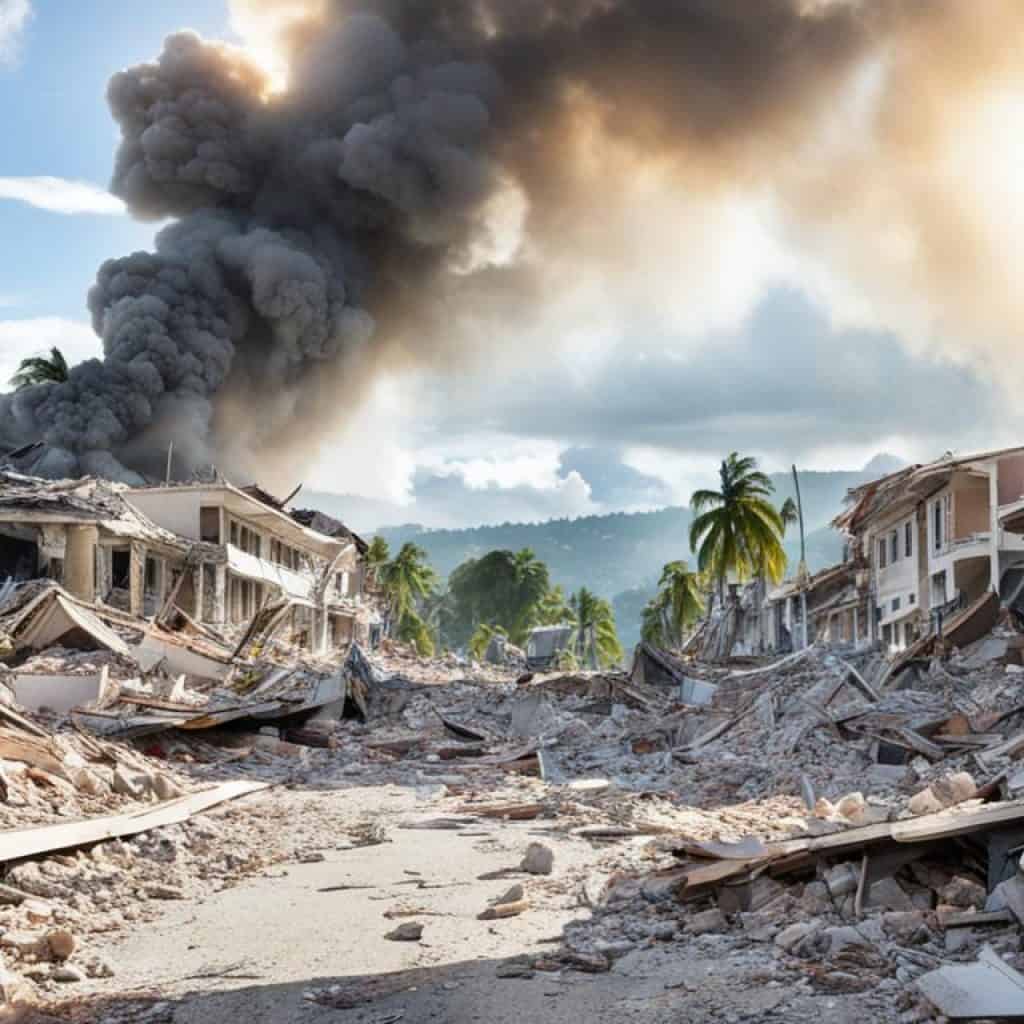
Cultural Events and Festivals in Bohol
Bohol is known for its rich culture and lively festivals. One key event is the Sinulog Festival, celebrated in January. It’s a big deal in Bohol and nearby areas, starting in Cebu City.
The festival honors the Santo Niño, or Holy Child Jesus, with lots of activities. You’ll see street dances, music, and floats. Everyone wears bright costumes, dances, and prays to the beat of drums.
People from around the world come to enjoy this festival. It’s a mix of fun, culture, and spirituality. For Bohol’s people, it’s a time of happiness, togetherness, and spiritual reflection.
If you’re visiting Bohol, you should check out the Sinulog Festival. It’s a chance to join in the fun, see the dances, and meet welcoming locals. It celebrates Bohol’s unique cultural heritage.
This event is unforgettable and a highlight of Bohol’s attractions. Don’t miss it!
| Key Highlights of the Sinulog Festival |
|---|
| Colorful street dances |
| Traditional music performances |
| Adorned floats procession |
| Vibrant costumes |
| Spiritual reflection and prayers |
Central Visayas Region: A Perfect Blend of Beauty and Culture
Bohol lies in the Central Visayas region, known for its stunning beauty and cultural variety. The region includes several provinces, like Bohol. It offers an amazing mix of landscapes and customs.
Central Visayas lets you explore nature’s finest views. See white sand beaches and clear blue waters full of sea life. Marvel at the Chocolate Hills, over a thousand hills that look like chocolate mounds. Go island-hopping to see places like Balicasag Island and Pamilacan Island.
This area isn’t just about nature. It’s rich in culture too. Learn about the history, and get swept up in festivals, dance, and music. Visit old churches and enjoy the festive atmosphere of events like Sinulog.
“Central Visayas region is a treasure trove of natural wonders and cultural experiences. From breathtaking landscapes to captivating festivals, it shows the beauty and diversity of the Philippines.”
Transport Options to Get to Bohol
Planning your trip to Bohol? You have many transport ways to pick from. You can fly, take a bus, or go by boat. All options make reaching this charming area in the Philippines’ Central Visayas easy.
By Airlines: Convenient and Time-Saving
Want a fast and easy trip? Flying is best. There are regular flights to Tagbilaran airport from big Philippine cities. This airport is your gateway to explore Bohol’s wonders.
By Bus: Scenic and Affordable
Love seeing beautiful views on a road trip? Take a bus. Buses from different areas go straight to Bohol. It’s a great way to see stunning landscapes while heading there.
By Boat: Experiencing the Sea
Looking for adventure on the sea? Go by boat. Ferries let you see the ocean’s beauty and try island-hopping. It’s a unique way to get to this tropical paradise.
Whatever way you travel, you’ll soon be in Bohol. Get ready to see amazing sights, lovely beaches, and explore its culture.
Getting Around Bohol
Exploring Bohol is easy and fun, thanks to many transport choices. You can move by sea or air smoothly and without trouble.
By Sea
Traveling by sea is a favorite in Bohol. Regular ferries connect islands and coastal spots. They provide a serene way to see Bohol’s coastlines.
Island hopping to Panglao or diving around Balicasag and Pamilacan is thrilling. The sea journey in Bohol adds to the adventure.
By Air
For faster travel, domestic flights to Bohol are available. Tagbilaran Airport is the main hub. It links Bohol to the Philippines’ major cities.
Flying saves time, making it easier to visit places like the Chocolate Hills. It provides a quick and easy journey to the province’s spots.
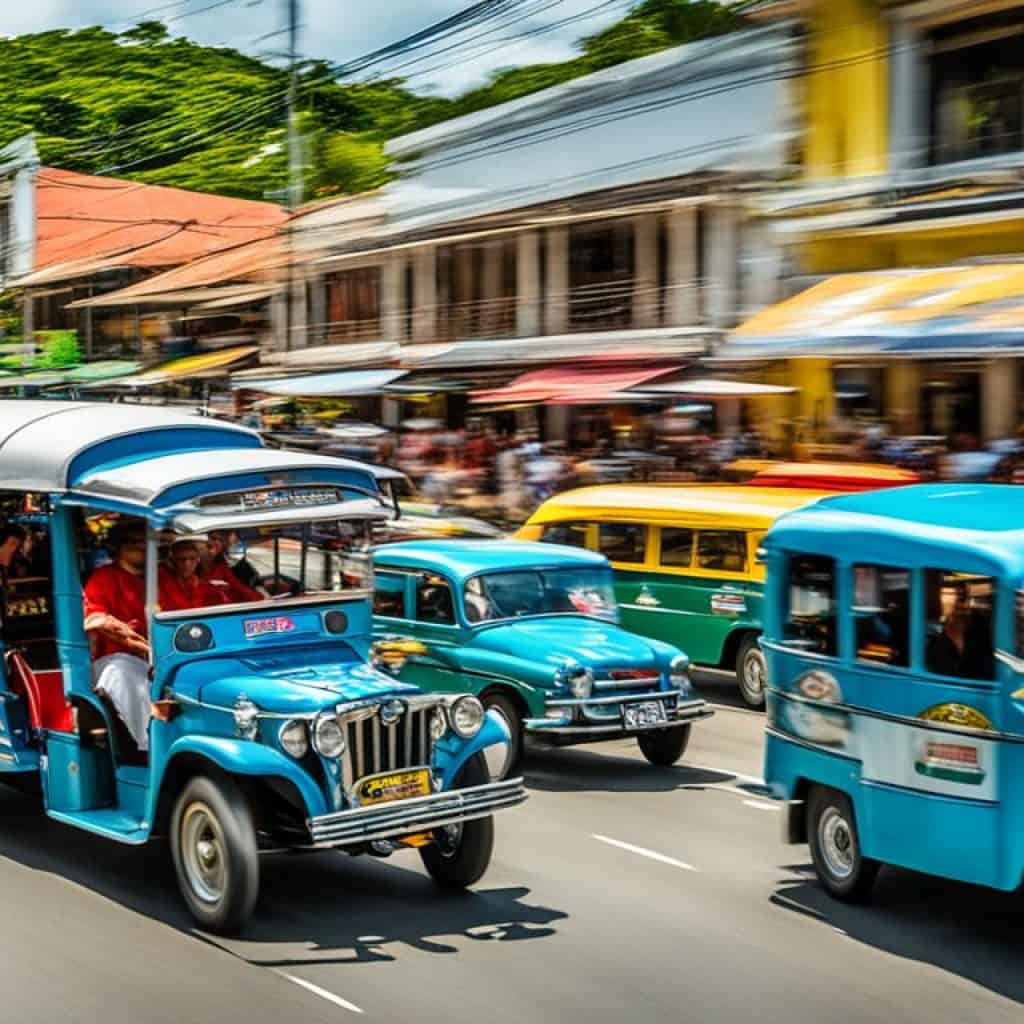
Bohol is accessible by sea and air. Whether you enjoy ferries or flights, you’ll find exploring Bohol a breeze.
Conclusion
Bohol is in the heart of the Philippines’ Central Visayas region. It’s known for its stunning natural sights and rich culture. From the amazing Chocolate Hills to the clean Panglao Island beaches, there’s much to see. And, you can’t miss the lively local celebrations.
Get ready for your Bohol trip with some tips. Comfortable shoes are a must for all the walking. Sunscreen and a hat will keep you safe from the sun. Also, tasting Boholano dishes will give you a true taste of the area.
Bohol is perfect for any traveler. Adventure, beaches, or culture—you’ll find it all here. Start planning your unforgettable trip to Bohol. Get packing and set off on an adventure that promises beautiful landscapes, friendly people, and a rich culture.
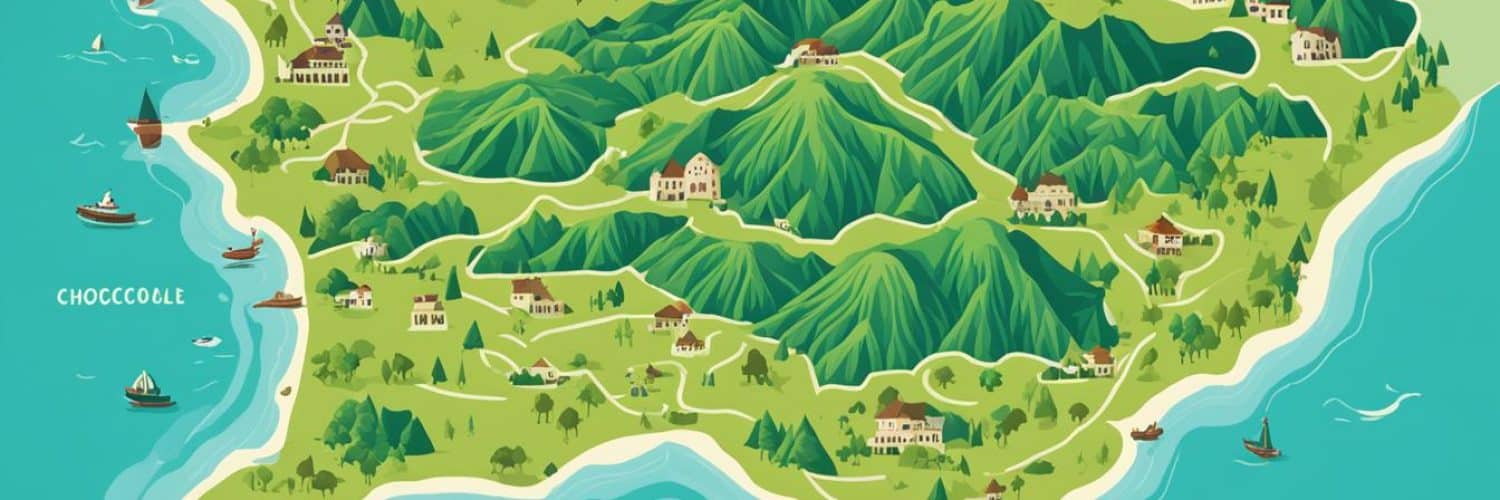

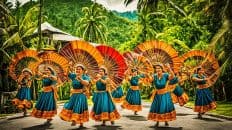
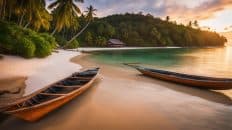














Add comment